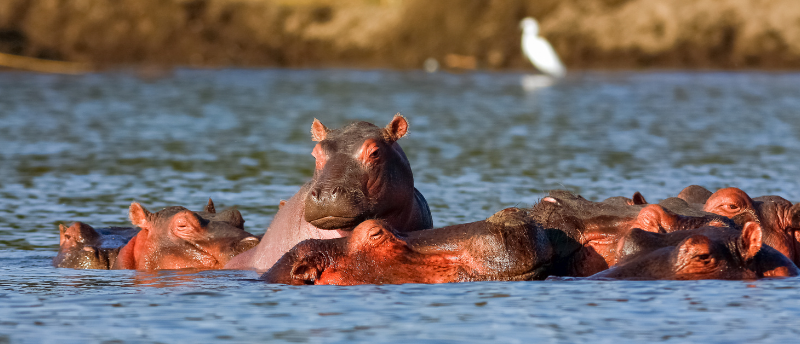Hippos can decipher their friend’s thunderous calls from a stranger’s

Hippos can identify their friends and neighbors from an unknown hippo by just their vocalizations and will shout ‘stranger danger’ accordingly – or fling their poo.
Hippos are social animals who live together in groups called schools consisting of 10 to 30 hippos. They communicate between schools using sounds described as a ‘wheeze honk’, which can be heard up to a mile away and reach 115 decibels collectively – a volume comparable to standing near the speaker at a gig.
It is thought that hippos use these thunderous calls to maintain social dynamics of the hippo world. Now, researchers at the University of Saint-Etienne (France), led by Nicolas Mathevon, observed that hippos can distinguish their own calls from neighboring hippo schools and from complete strangers.
Mathevon’s lab looks at how living organisms communicate using different sounds, a field known as bioacoustics, and are especially interested in communication networks. Researching this amongst hippos was made possible by working in the Maputo Special Reserve (Machate, Mozambique), which consists of several lakes that are home to different groups of hippos.
The researchers recorded the calls of one group of hippos, played the recordings to different groups, and noted their response. “We found that the vocalizations of a stranger individual induced a stronger behavioral response than those produced by individuals from either the same or a neighboring group,” explains Mathevon. “In addition to showing that hippos are able to identify conspecifics [members of the same species] based on vocal signatures, our study highlights that hippo groups are territorial entities that behave less aggressively towards their neighbors than toward strangers.”
Using thermal cameras, researchers learn that a pheasant’s head cools down during aggressive encounters that establish the pecking order.
The hippo’s territorial response towards complete strangers included spraying dung, alongside intensified vocalizations. “The responses to the sound signals we broadcast were very clear, and we did not expect that,” explains Mathevon. These more aggressive actions were also observed when the hippos were in the water, clearly paying attention to any unfamiliar hippos in their neighborhood.
The researchers hope this insight into the tight-knit nature of hippo social groups will affect conservation policy in future. They explain that hippos are sometimes relocated to a different lake to maintain population sizes. Moving to a new neighborhood is stressful, and it’s understandable that hippos respond aggressively to strangers and unfamiliar faces – or voices. These findings suggest extra care is needed to ensure hippos don’t feel threatened but feel familiar with any new hippos introduced to the block.
“Before relocating a group of hippos to a new location, one precaution might be to broadcast their voices from a loudspeaker to the groups already present so that they become accustomed to them and their aggression gradually decreases,” explains Mathevon. “Reciprocity, in which the animals to be moved become accustomed to the voices of their new neighbors before they arrive, could also be considered.”
Next, Mathevon’s team hope to decode these ‘wheeze honks’ and look at how they recognize another hippos’ calls, and if these sounds reveal other characteristics like age, size and sex.






